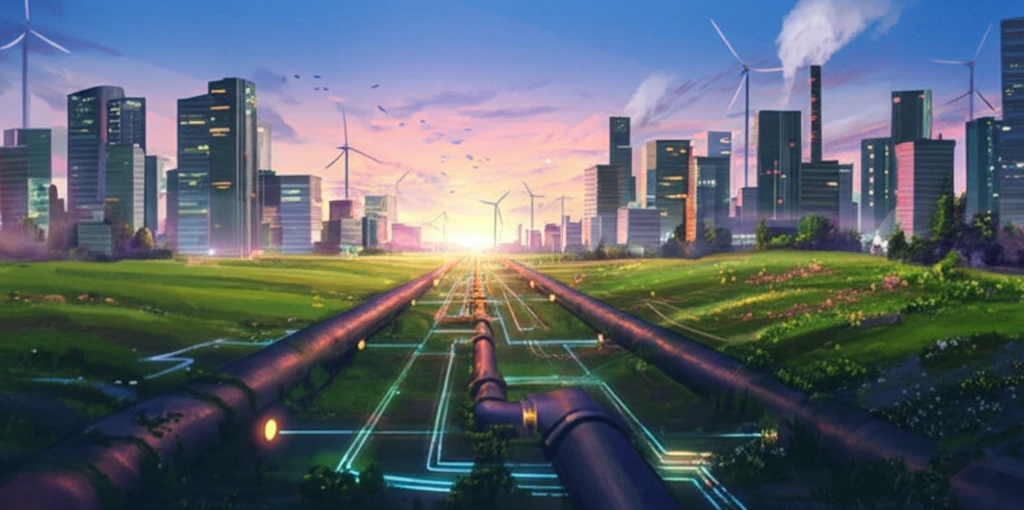
Heat Up Your City: A Simple Guide to District Heating for a Greener Tomorrow
"Discover how rural and urban district heating systems can revolutionize energy efficiency and create sustainable communities."
The world is racing toward a greener future, and heating our homes and businesses is a significant piece of the puzzle. Traditional heating methods, particularly those relying on fossil fuels, contribute heavily to carbon emissions. District heating, a system that distributes heat from a central source to multiple buildings, offers a compelling alternative. However, implementing these systems can be complex and costly, especially in rural areas.
But what if there was a way to simplify the process, making district heating accessible to communities of all sizes? Recent research explores a simplified approach to modeling district heating networks, designed to be user-friendly and cost-effective. This innovative method could pave the way for wider adoption of district heating, transforming how we heat our cities and towns.
This article breaks down the key findings of this research, explaining how a simpler approach to district heating modeling can benefit both urban and rural areas, offering a pathway to a more sustainable and energy-efficient future. Whether you're an environmental advocate, a city planner, or simply curious about innovative energy solutions, this guide will provide you with a clear understanding of district heating and its potential.
What is District Heating and Why Does It Matter?

District heating is essentially a centralized heating system, think of it as a public utility for heat. Instead of individual furnaces or boilers in each building, heat is generated at a central plant and then distributed through a network of insulated pipes to homes, businesses, and other buildings. This heat can be used for space heating, hot water, and even industrial processes.
- Efficiency: Centralized plants can achieve higher efficiencies than individual heating systems, reducing overall fuel consumption.
- Fuel Flexibility: District heating plants can utilize a variety of fuel sources, including renewable energy like solar thermal, geothermal, and biomass, as well as waste heat from industrial processes.
- Reduced Emissions: By consolidating heating to a central plant, emissions can be more effectively controlled and reduced.
- Cost Savings: In the long run, district heating can offer cost savings through economies of scale and reduced maintenance for individual building owners.
- Reliability: District heating systems provide a reliable heat supply, even during power outages.
The Future is Warm and Green
Simplified district heating models offer a promising pathway towards wider adoption of this sustainable energy solution. By making the planning and implementation process more accessible, communities can unlock the economic and environmental benefits of district heating, creating a future that is both warm and green. With ongoing innovation and a commitment to sustainability, district heating has the potential to play a pivotal role in shaping the energy landscape of tomorrow.
